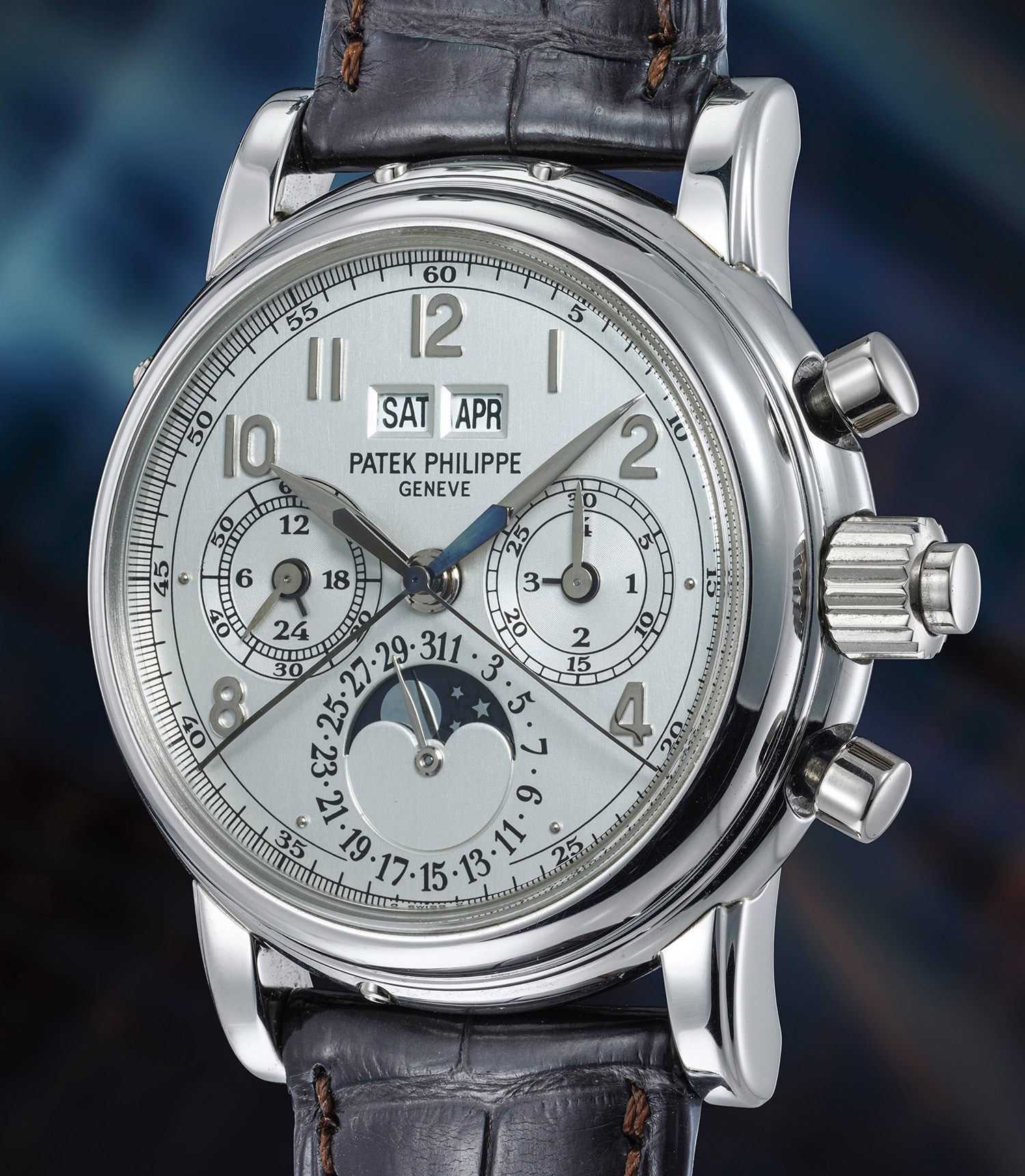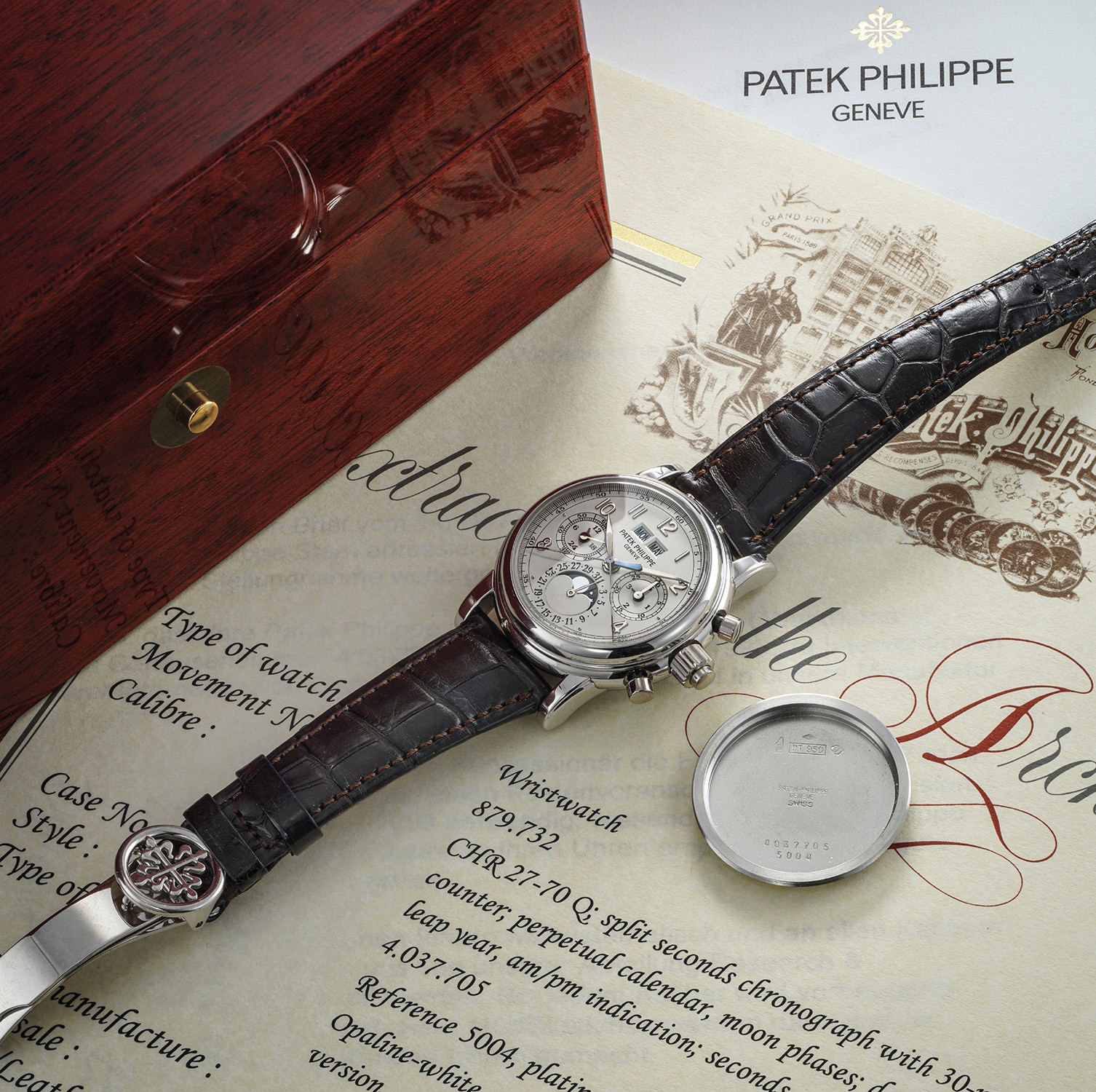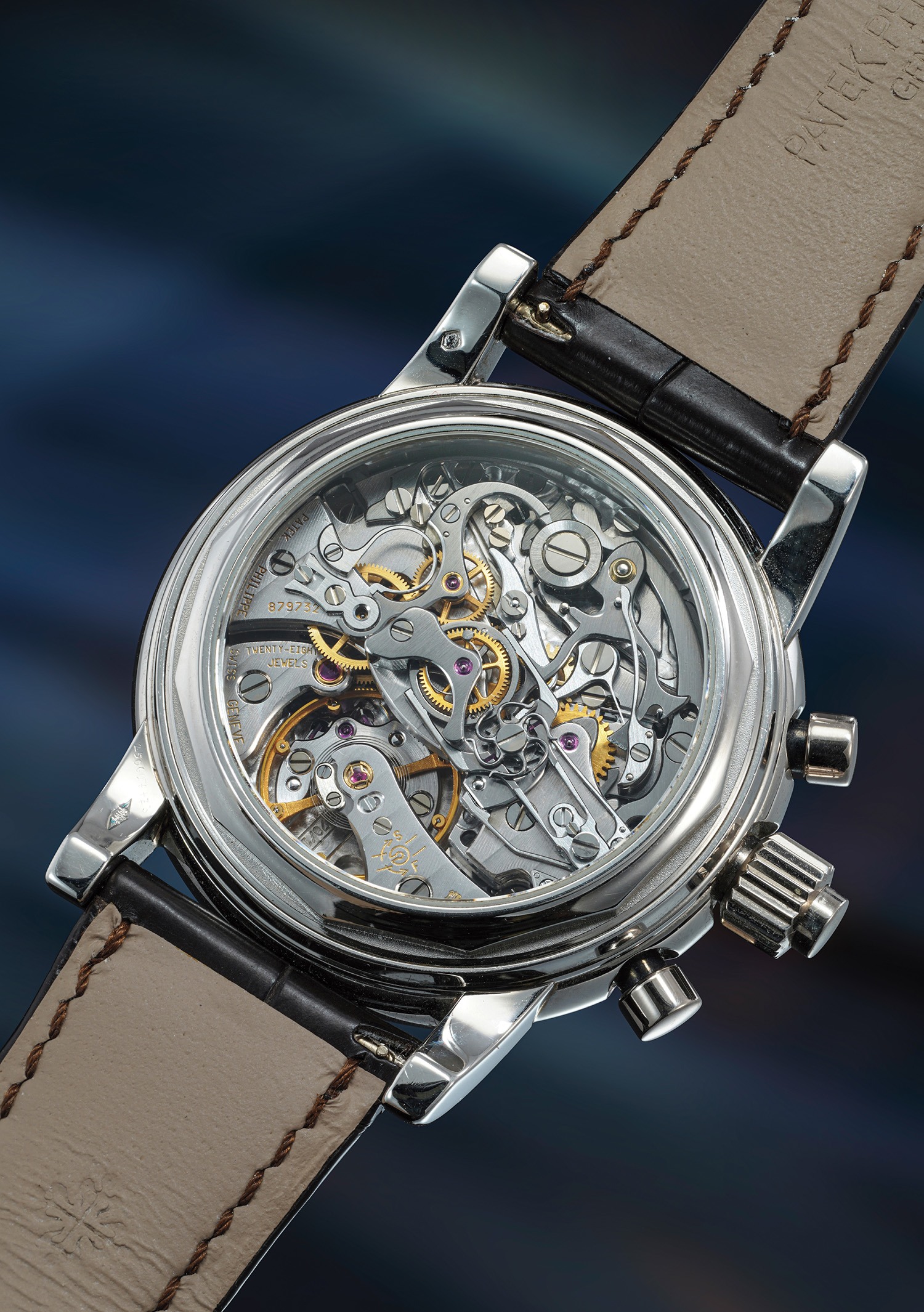





60Σ
Patek Philippe
Ref. 5004P
An extremely attractive, scarce and collectible platinum split-second chronograph wristwatch with moonphases, 24-hour indication, leap year cycle indication, additional back and box
Full-Cataloguing
The present piece not only is offered in very well-preserved condition, but furthermore is retailed by hallowed Zurich-based retailer Beyer (as indicated by the Beyer inventory number “250607” subtly hand-engraved under the top-left lug) and comes with the original Beyer sale invoice dated December 15, 1998 and handwritten payment receipt dated December 12, 1998.
The inventory number sheds some light on why this watch comes with a Certificate for a completely different model (ref. 5041G). As one can see, the 5041 Certificate is marked - as most if not all Patek Certificate for watches sold by Beyer - with the Beyer inventory number “205207” and dated December 15 - the same sale date present on the invoice for the present watch. It is obvious that a mistake was at the time made at Beyer and the Certificate for the ref. 5041 (inventory no. 205207) was given to the client instead of the correct one (inventory no 205607). Luckily, the meticulous document keeping of the original owner more than compensates for this mistake thanks to the presence of the aforementioned original invoice - a document even more rarely found with a vintage timepiece than the Certificate of Origin.
Patek Philippe
Swiss | 1839Since its founding in 1839, this famous Geneva-based firm has been surprising its clientele with superbly crafted timepieces fitted with watchmaking's most prestigious complications. Traditional and conservative designs are found across Patek Philippe's watches made throughout their history — the utmost in understated elegance.
Well-known for the Graves Supercomplication — a highly complicated pocket watch that was the world’s most complicated watch for 50 years — this family-owned brand has earned a reputation of excellence around the world. Patek's complicated vintage watches hold the highest number of world records for results achieved at auction compared with any other brand. For collectors, key models include the reference 1518, the world's first serially produced perpetual calendar chronograph, and its successor, the reference 2499. Other famous models include perpetual calendars such as the ref. 1526, ref. 3448 and 3450, chronographs such as the reference 130, 530 and 1463, as well as reference 1436 and 1563 split seconds chronographs. Patek is also well-known for their classically styled, time-only "Calatrava" dress watches, and the "Nautilus," an iconic luxury sports watch first introduced in 1976 as the reference 3700 that is still in production today.